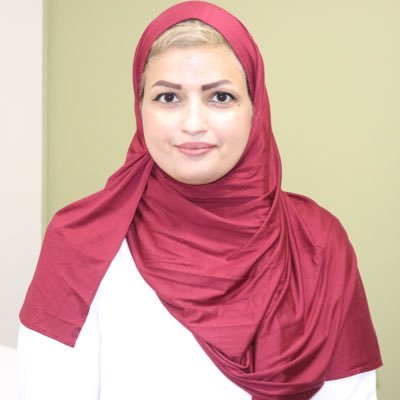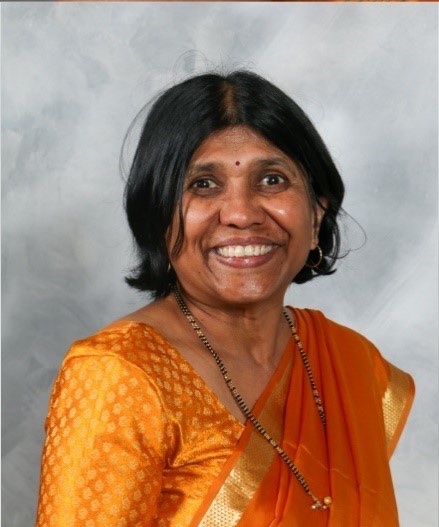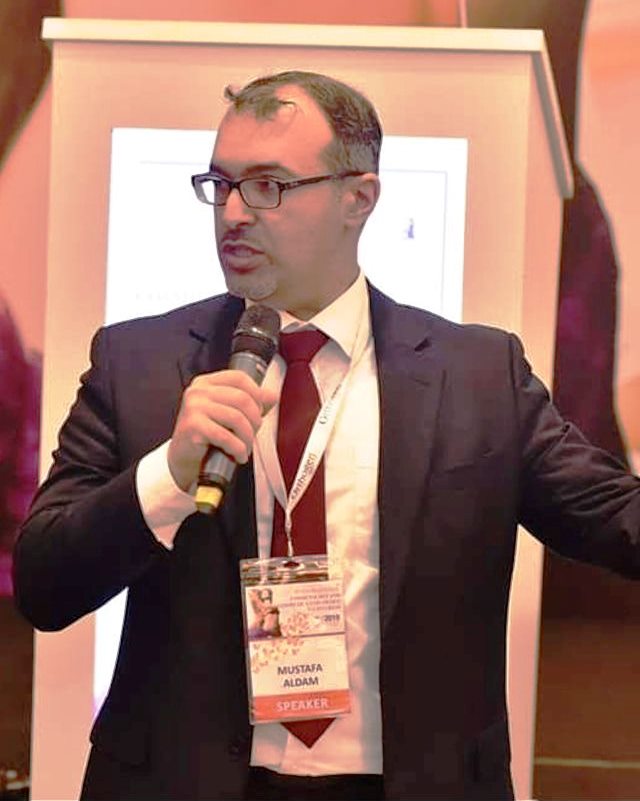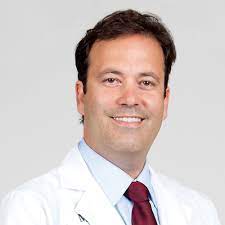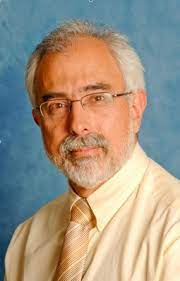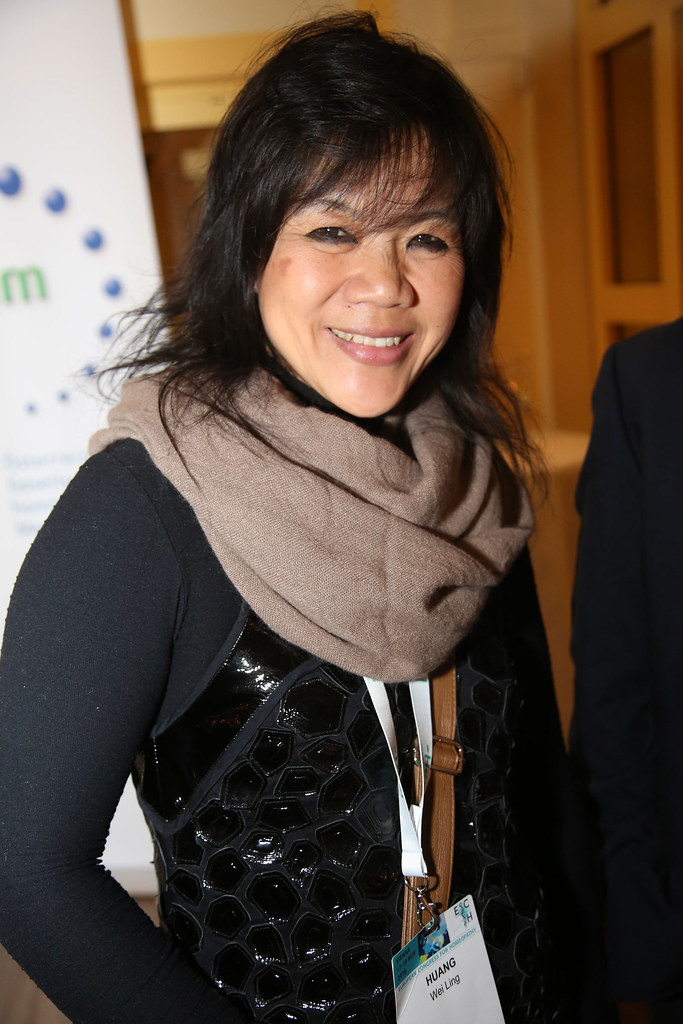Theme: Exploring the Pharmacology and Bio Technology innovations for better living
Medicalhealth-2022
We would be glad to invite you all to attend the International conference on Medical Health Science, Pharmacology & Bio Technology is a prestigious event organized with a motivation to provide an excellent international platform for the academicians, researchers, engineers, industrial participants and budding students around the world to share their research findings with the global experts. Medical Health-2022 will be held in Zurich, Switzerland on December 5-6 , 2022 ,Theme of the conference : Exploring the Pharmacology and Bio Technology innovations for better life.
The key intention of Medical Health-2022 is to provide opportunity for the global participants to share their ideas and experience in person with their peers expected to join from different parts on the world. In addition this gathering will help the delegates to establish research or business relations as well as to find international linkage for future collaborations in their career path. We hope that Medical Health-2022 outcome will lead to significant contributions to the knowledge base in these up-to-date scientific fields in scope.
Pharmacology will feature a detailed technical program covering the latest research advancements and innovations in the pharma and clinical field. The topics of interest for submissions include, but are not limited to:
Track-1: Health science
The health sciences study all aspects of health, disease and healthcare. This field of study aims to develop knowledge, interventions and technology for use in healthcare to improve the treatment of patients.
Specialisations in health sciences include anatomy, physiology, pharmacy, radiography, neurophysiology, microbiology, epidemiology, immunology, others. A health science major is for students interested in understanding the underlying cause of disease, analyzing human behavior and sparking change, and promoting wellness to improve health outcomes
Track-2: Biotechnology
Biotechnology is the use of biology to solve problems and make useful products. The most prominent approach used is genetic engineering, which enables scientists to tailor an organism’s DNA at will.
Biotechnology is particularly important in the field of medicine, where it facilitates the production of therapeutic proteins and other drugs. Synthetic insulin and synthetic growth hormone and diagnostic tests to detect various diseases are just some examples of how biotechnology is impacting medicine. Biotechnology has also proved helpful in refining industrial processes, in environmental clean-up, and in agricultural production.
Track-3: Pharmacology
Pharmacology is a branch of medicine, biology and pharmaceutical sciences concerned with drug or medication action, where a drug may be defined as any artificial, natural, or endogenous molecule which exerts a biochemical or physiological effect on the cell, tissue, organ, or organism.The Example for Pharmacology is Clinical pharmacology is the application of pharmacological methods and principles in the study of drugs in humans. An example of this is posology, which is the study of how medicines are dosed. Pharmacology is closely related to toxicology.
Track-4: Evidence Based Practice Resources
Evidence-based resources (EBRs) are reviews of published intervention evaluations or studies that have evidence of effectiveness, feasibility, reach, sustainability, and transferability.Evidence Based Practice (EBP) is the integration of clinical expertise, patient values, and the best research evidence into the decision making process for patient care. EBP is important because it aims to provide the most effective care that is available, with the aim of improving patient outcomes. Patients expect to receive the most effective care based on the best available evidence
Track-5: Healthcare Quality
Accreditation and Certification of Hospitals and Community-Based Services. Clinical Quality Performance Measurement and Improvement. Patient Safety Assurance and Harm Prevention. Patient Experiences and Perceptions of Care.
Donabedian’s definition is interesting because it specifies that quality of care is related to the process of care in all its parts and that the goal of high-quality care is to maximize patient welfare. Patient welfare certainly includes the health status of the patient (later specified as encompassing physical, physiological and psychological dimension. Overall improving the quality and performance in the healthcare environment can help providers with reliable, cost-effective and sustained healthcare processes and enable them to achieve their goal of improving care delivery and enhancing patient outcomes.
Track-6: Family Medicine
Family medicine (FM) is a clinical medical specialty which is devoted to the comprehensive health care for people of all ages and provides continuing and comprehensive health care for the individual and family across all ages, genders, disease, and parts of the body. The five principles are: compassionate care - a caring attitude towards patients and their families shown as kindness and a desire to help; generalist approach - a perspective on the whole person and the context of illness including family, culture and society; continuity of relationship.
The names of the specialty emphasize its holistic nature and/or its roots in the family. It is based on knowledge of the patient in the context of the family and the community, centering on disease prevention and health promotion.
Track-7: Forensic Science
Forensic science is a critical element of the criminal justice system. Forensic scientists examine and analyse evidence from crime scenes and elsewhere to develop objective findings that can assist in the investigation and prosecution of perpetrators of crime or absolve an innocent person from suspicion. Work as a forensic scientist can involve: collecting trace evidence from scenes of crime or accidents and recording findings. analysing samples such as hair, body fluids, glass, paint and drugs in the laboratory. applying various techniques as appropriate; eg DNA profiling, mass spectrometry, chromatography.
Track-8: Nursing
Nursing is a profession within the health care sector focused on the care of individuals, families, and communities so they may attain, maintain, or recover optimal health and quality of life. They also take on vital roles of education, assessing situations, as support. A registered nurse's primary role is to ensure that every patient receives the direct and proper care they need, and they go about doing this in a number of ways. RNs assess and identify patients' needs, then implement and monitor the patient's medical plan and treatment. A registered nurse's primary role is to ensure that every patient receives the direct and proper care they need, and they go about doing this in a number of ways. RNs assess and identify patients' needs, then implement and monitor the patient's medical plan and treatment.
Track-9: Public Health
Public health has been defined as "the science and art of preventing disease, prolonging life and promoting health through the organized efforts and informed choices of society, organizations, public and private, communities and individuals". Examples of public health efforts include educating the public about healthier choices, promoting physical activity and fitness, preventing disease outbreaks and the spread of infectious diseases, ensuring safe food and water in communities, preparing for emergency, preventing injury, treating water with fluoride for oral and dental health, and creating smoke-free environments and discouraging tobacco use.
Track-10: Psychiatry and Mental Health
The study and treatment of mental illness, emotional disturbance, and abnormal behaviour.
Mental health refers to cognitive, behavioural, and emotional well-being. It is all about how people think, feel, and behave. People sometimes use the term “mental health” to mean the absence of a mental disorder. Mental health can affect daily living, relationships, and physical health. A psychiatrist is a medical doctor (an M.D. or D.O.) who specializes in mental health, including substance use disorders. Psychiatrists are qualified to assess both the mental and physical aspects of psychological problems. People seek psychiatric help for many reasons.
Mental illness, also called mental health disorders, refers to a wide range of mental health conditions — disorders that affect your mood, thinking and behavior. Examples of mental illness include depression, anxiety disorders, schizophrenia, eating disorders and addictive behaviors.
Track-11: Rehabilitation Therapy
Special healthcare therapy that help a person regain physical, mental, and/or cognitive (thinking and learning) abilities that have been lost or impaired as a result of disease, injury, or treatment. Rehabilitation Therapy helps people return to daily life and live in a normal or near-normal way. This therapy may include physical therapy, occupational therapy, speech and language therapy, cognitive therapy, and mental health rehabilitation therapies. What is rehabilitation? -Rehabilitation is care that can help you get back, keep, or improve abilities that you need for daily life. These abilities may be physical, mental, and/or cognitive (thinking and learning). You may have lost them because of a disease or injury, or as a side effect from a medical treatment.
Track-12: Natural, Environmental and Health Sciences
Environmental health science means the aspect of public health science that includes, but is not limited to, the following bodies of knowledge: air quality, food quality and protection, hazardous and toxic substances, consumer product safety, housing, institutional health and safety, community noise control, radiation protection, recreational facilities, solid and liquid waste management, vector control, drinking water quality, milk sanitation, and rabies control. Natural science is the empirical sciences that explains or predicts natural phenomena. It is a science, such as biology, chemistry, geology, astronomy, or physics that deals with the objects, phenomena, or laws of nature and the physical world. A natural science is something that deals with the study of the Universe in parts
Track-13: Biotechnology
Biotechnology, the use of biology to solve problems and make useful products. The most prominent area of biotechnology is the production of therapeutic proteins and other drugs through genetic engineering. Recombinant DNA. Biotechnology utilizes living cells and cellular materials to create pharmaceutical, diagnostic, agricultural, environmental, and other products to benefit society. It is also used to study and to alter genetic information in animals so that human diseases can be modeled and studied.Recent biotechnology develops breakthrough products and technologies to fight diseases, reduce our environmental harm, feed the hungry, use less and cleaner energy, and have safer, cleaner and more efficient industrial manufacturing processes.
Track-14: Reproductive Biotechnology
Reproductive technology encompasses all current and anticipated uses of technology in human and animal reproduction, including assisted reproductive technology, contraception and others.Various biotechnology methods are used in improving the breeding stock of animals. These include artificial insemination (AI), embryo transfer (ET), in-vitro fertilization (IVF), somatic cell nuclear transfer, and the emerging technology on somatic cell nuclear transfer. The application of biotechnology to agriculturally important crop species has traditionally involved the use of selective breeding to bring about an exchange of genetic material between two parent plants to produce offspring having desired traits such as increased yields, disease resistance, and enhanced product quality.
Track-15: Bioremediation and Biodegradation
Bioremediation is a process that uses mainly microorganisms, plants, or microbial or plant enzymes to detoxify contaminants in the soil and other environments. Biodegradation is the breakdown of organic matter by microorganisms, such as bacteria and fungi. It is generally assumed to be a natural process, which differentiates it from composting. Composting is a human-driven process in which biodegradation occurs under a specific set of circumstances. Bioremediation helps clean up polluted environments, including soils, groundwater, and marine environments. Such systems can include bacteria, fungi, algae, and plant species. They are capable of metabolizing, immobilizing, or absorbing toxic compounds from their environment.
Track-16: Environmental Biotechnology
Environmental biotechnology is the branch of biotechnology that addresses environmental problems, such as the removal of pollution, renewable energy generation or biomass production, by exploiting biological processes. The main application of environmental biotechnology is the biodegradation of organic matter of municipal wastewater and biodegradation/detoxication of hazardous substances in industrial waste water. We can also define Environmental biotechnology as the branch of biotechnology that includes environmental issues such as the removal of pollution, renewable energy production, or Biomass production by using biological processes
Track-17: Food and Nutritional Biotechnology
Food biotechnology is the use of technology to modify the genes of our food sources. Our food sources are animals, plants, and microorganisms. With food biotechnology, we create new species of animals and plants, for example, specifically animals and plants that we eat.Modern Biotechnology is helpful in enhancing taste, yield, shell life and nutritive values.This is also useful in food processing (fermentation and enzyme involving processes). So Biotechnology is beneficial in erasing hunger, malnutrition and diseases from developing countries and third word. Other areas of strong interest are microbial and fermentation-based metabolic processing to improve foods, food microbiomes for health, metabolic basis for food ingredients with health benefits, molecular and metabolic approaches to functional foods, and biochemical processes for food waste remediation.
Track-18: Stem Cell Biotechnology
Stem cell biotechnology is a field of biotechnology that develops tools and therapeutics through modification and engineering of stem cells. Stem cell biotechnology is important in regenerative medicine. Stem cells are divided into 2 main forms. They are embryonic stem cells and adult stem cells. Embryonic stem cells. The embryonic stem cells used in research today come from unused embryos. Stem cells are pretty ubiquitous in the body, appearing in many different organs and tissues including the brain, blood, bone marrow, muscle, skin, heart, and liver tissues. In these areas, they lie dormant until needed to regenerate lost or damaged tissue
Track-19: Bio Informatics
Bioinformatics is an interdisciplinary field that develops methods and software tools for understanding biological data, in particular when the data sets are large and complex. Bioinformatics combines computer programming, big data, and biology to help scientists understand and identify patterns in biological data. It is particularly useful in studying genomes and DNA sequencing, as it allows scientists to organize large amounts of data. The field of computer science called bioinformatics is used to analyze whole-genome sequencing data. This involves algorithm, pipeline and software development, and analysis, transfer and storage/database development of genomics data.
Track-20: Cell Biology and Immunology
Immunology & Cell Biology is an academic journal of the Australian and New Zealand Society for Immunology covering basic immunology research. The journal has a focus on cellular immunology, innate and adaptive immunity, immune responses to pathogens, tumour immunology, immunopathology, immunotherapy, immunogenetics and immunological studies in humans and model organisms (including mouse, rat, Drosophila etc.). The journal was founded in 1924 as the Australian Journal of Experimental Biology and Medical Science, and was converted in 1987 to Immunology and Cell Biology,[2] making it one of the oldest speciality immunology journals in existence. Major historical contributions including publication by Donald Metcalf of the strategy for identifying colony-stimulating factors (CSFs)[3] and the development of the clonal selection theory by Frank Macfarlane Burnet, in a series of more than 90 publications in the 1970s.
Track-21: Plant and Agriculture Biotechnology
Agricultural biotechnology is the term used in crop and livestock improvement through biotechnology tools. Biotechnology encompasses a number of tools and elements of conventional breeding techniques, bioinformatics, microbiology, molecular genetics, biochemistry, plant physiology, and molecular biology. Agricultural biotechnology, also known as agritech, is an area of agricultural science involving the use of scientific tools and techniques, including genetic engineering, molecular markers, molecular diagnostics, vaccines, and tissue culture, to modify living organisms: plants, animals, and microorganisms.
Track-22: Genetic Engineering and RDNA Technology
Genetic engineering (also called genetic modification) is a process that uses laboratory-based technologies to alter the DNA makeup of an organism. This may involve changing a single base pair (A-T or C-G), deleting a region of DNA or adding a new segment of DNA.
Recombinant DNA Technology is defined by the Encyclopaedia Britannica as “the joining together of DNA molecules from different organisms and inserting it into a host organism to produce new genetic combinations that are of value to science, medicine, agriculture and industry.”
Track-23: Pharmacology
Pharmacology is the scientific study of the effects of drugs and chemicals on living organisms where a drug can be broadly defined as any chemical substance, natural or synthetic, which affects a biological system. Clinical pharmacology is the application of pharmacological methods and principles in the study of drugs in humans. An example of this is posology, which is the study of how medicines are dosed. Pharmacology is closely related to toxicology. Pharmacology is there when you take medicine for a headache. Pharmacologists created hay fever tablets, antibiotics, cancer treatments, and many other medicines that millions of us use each day. Pharmacology is at the forefront of our fight to help ensure everyone has the opportunities to live healthy lives for longer.
Tracks-24: Pharmaceutical Technology
Pharmaceutical technology is one of the pharmaceutical sciences dealing with the composition, formulation, preparation or manufacturing and quality control of extemporaneously compounded or commercially manufactured drugs. Pharmaceutics helps relate the formulation of drugs to their delivery and disposition in the body. Pharmaceutics deals with the formulation of a pure drug substance into a dosage form. Branches of pharmaceutics include: Pharmaceutical formulation. The pharmaceutical industry discovers, develops, produces, and markets drugs or pharmaceutical drugs for use as medications to be administered to patients (or self-administered), with the aim to cure them, vaccinate them, or alleviate symptoms.
Track-25: Genomics and Proteomics
Genomics provides an overview of the complete set of genetic instructions provided by the DNA, while transcriptomics looks into gene expression patterns. Proteomics studies dynamic protein products and their interactions, while metabolomics is also an intermediate step in understanding organism's entire metabolism. Proteomics is the analysis of the entire protein complement of a cell, tissue, or organism under a specific, defined set of conditions. Genomics is the study of all of a person's genes (the genome), including interactions of those genes with each other and with the person's environment.
Track-26: Pharmacogenomics
The study of how a person's genes affect the way he or she responds to drugs. Pharmacogenomics is being used to learn ahead of time what the best drug or the best dose of a drug will be for a person. Also called pharmacogenetics. In clinical studies, pharmacogenetic tests can be used for stratification of patients based on their genotype, which corresponds to their metabolizing capacity. This prevents the occurrence of severe adverse drug reactions and helps in better outcome of clinical trials. This can also reduce attrition of drug compounds.
Global Medical Health :
The growth in the number of online medical programs is one of the significant explanations behind the medical education market development. The fame of online medical courses is expanding altogether among the both understudies and colleges that offer medical degrees. The developing interest for online courses is credited to different advantages offered by online learning contrasted with conventional learning. The accessibility of online medical courses permit understudies to plan and complete modules according to their benefit. Besides, online courses give students chances to talk about points with coaches or companions on conversation discussions. Also, merchants are utilizing cell phones and are making versatile applications to build their client base.
This statistical surveying report portions the medical education market by geography (APAC, Europe, North America, MEA, and South America), learning strategy (mixed learning and web based learning) and courses (graduate courses, affirmations and preparing, and post-graduate courses).
The North American locale drove the market, trailed by Europe, APAC, South America, and MEA individually. The development of the medical education market share of the overall industry in North America can be credited to variables, for example, the expanding enlistments in separation learning medical degrees, and the broad appropriation of mixed learning strategies in North American medical schools.
Health Sciences :
Health science alludes to a huge gathering of orders identified with the delivery of health care to humans and animals through the utilization of science, designing, arithmetic and innovation. At the end of the day, it is the field where in information is taken from unadulterated science and other related sources and applied to handy and clinical practices to keep up and improve the strength of living creatures. The parts of wellbeing science are for all intents and purposes perpetual, crossing customary and ordinary Western medication just as option and people medication. Extensively characterized, it can even incorporate profound based mending forms.
While giving empowering indications of recuperation, the present economy is still on delicate balance. There are not many monetary parts that are blasting right now, and the activity showcase is trying, best case scenario. One special case is the health sciences field. Because of the maturing populace and significant changes in the medicinal services showcase, professions in wellbeing sciences are relied upon to see generous development throughout the following decade and into what's to come. As indicated by the U.S. Division of Labour’s Bureau of Labour Statistics (BLS), a vocation development pace of 11 percent is normal somewhere in the range of 2012 and 2022 for all occupations joined. Employment developments for most health science occupations, notwithstanding, are relied upon to twofold, significantly increase or even fourfold that rate over a similar period. The following are employment development projections from the BLS for various explicit wellbeing sciences occupations: Around there are 9.2 million doctors, 19.4 million medical attendants and maternity specialists, 1.9 million dental specialists and other dentistry staff, 2.6 million drug specialists and other pharmaceutical faculty, and over 1.3 million network wellbeing labourers, making the human services industry perhaps the biggest portion of the workforce.

Conference Highlights
- Health science
- Biotechnology
- Pharmacology
- Family Medicine
- Forensic Science
- Nursing
- Pharmacology
- Public Health
- Psychiatry and Mental Health
- Rehabilitation Therapy
- Natural, Environmental and Health Sciences
- Reproductive Biotechnology
- Bioremediation And Biodegradation
- Environmental Biotechnology
- Food And Nutritional Biotechnology
- Stem Cell Biotechnology
- Bio Informatics
- Cell Biology And Immunology
- Plant And Agriculture Biotechnology
- Genetic Engineering And RDNA Technology
- Pharmaceutical Technology,
- Genomics and Proteomics,
- Pharmacogenomics
To share your views and research, please click here to register for the Conference.
To Collaborate Scientific Professionals around the World
| Conference Date | December 05-06, 2022 | ||
| Sponsors & Exhibitors |
|
||
| Speaker Opportunity Closed | |||
| Poster Opportunity Closed | Click Here to View | ||
Useful Links
Special Issues
All accepted abstracts will be published in respective Our International Journals.
Abstracts will be provided with Digital Object Identifier by





